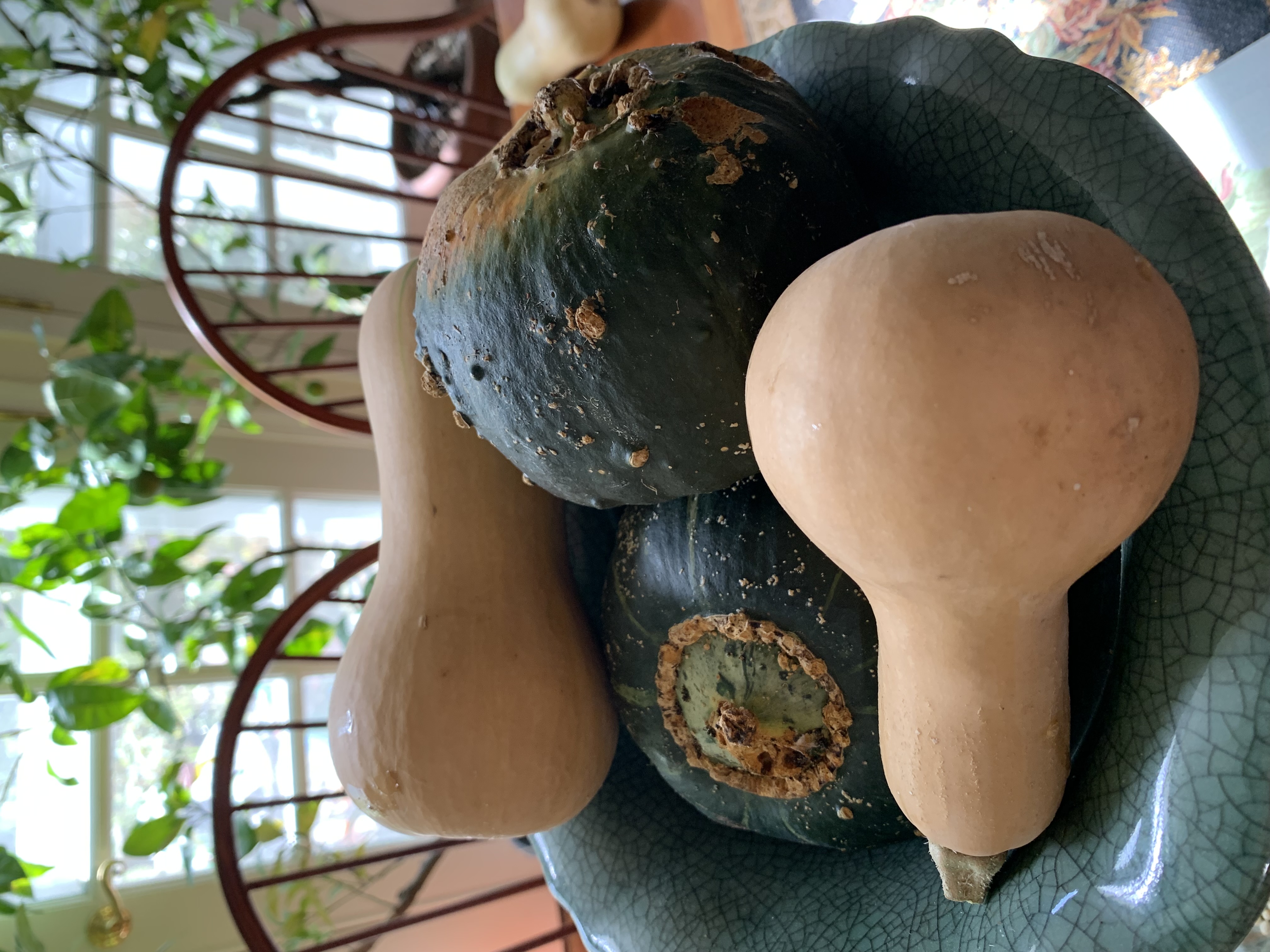Squash Season Arrives

By Maria Price
Now’s the time to harvest your winter squash. I think butternut and acorn squash are the best types of winter squash because they last a long time without refrigeration. I’ve had butternut squash that was good for almost a year. The skins are incredibly tough, which contributes to their longevity.
Butternut squash are an elongated beige squash with tough skin. They come in all different sizes, from a miniature Butterbaby of 4 to 6 inches long to the whopping Waltham butternut that grows to 9 inches long and can weigh 5 pounds. The butterscotch variety has been bred for sweetness and matures early at 1 to 2 pounds.
I also grow buttercup squash, a rounded dark green kabocha squash averaging 4 to 5 pounds with a creamy deep orange flesh with a rich, sweet flavor. It is a northern New England favorite.
Most winter squash take 100 days to mature. Sow them in the spring after the danger of frost is over. Direct seeding is best after the soil warms up to 70 degrees. Sow one to two seeds every 12 inches, half an inch to 1 inch deep in fertile, well-drained soil. Cucumber beetles can carry bacterial wilt where the leaves wilt and will not recover even when watered. Borers can be challenging but can be controlled organically with pyrethrins or hand-picking. Harvest before heavy frost, although these fruits can tolerate a few light touches of frost. Cure in the field to dry and toughen the skins by exposing the fruits to the sun for four to seven days or indoors at 80 to 90 degrees for three to five days.
The deep yellow and orange flesh colors of winter squash are an indication of the phytonutrient content of squash. They are rich in vitamin C and beta carotene, two antioxidants that have been shown in studies to help prevent cancer, heart disease, and certain age-related conditions such as problems with the eyes and lungs.
The skins of winter squash are difficult to cut. Rather than trying to cut them raw, partially bake the squash first— about 20 minutes at 375 degrees— then cut the squash open and clean it out. Then put it back in the oven and cook until tender. Clean the seeds, drizzle olive oil and butter over them and roast them in the oven until brown. Once browned, remove them from the oven and add salt or Old Bay for a tasty, healthy snack.
